Knossos; the largest Minoan palace in Crete
Written by Claire Messenger, Manager, International Training Programme
In September 2021, as the world started to open-up to international travel, I was lucky to have the opportunity to travel to the Greek Island of Crete and of course, while there, I HAD to visit the Minoan Palace of Knossos, one of the most famous archaeological sites in the world.
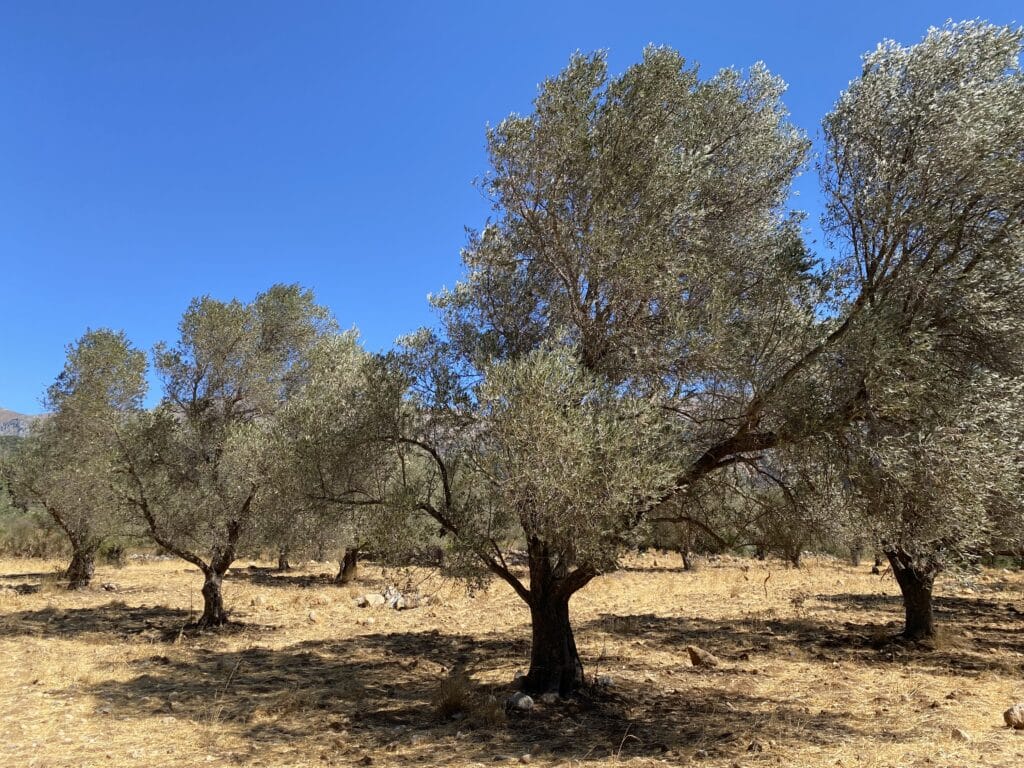
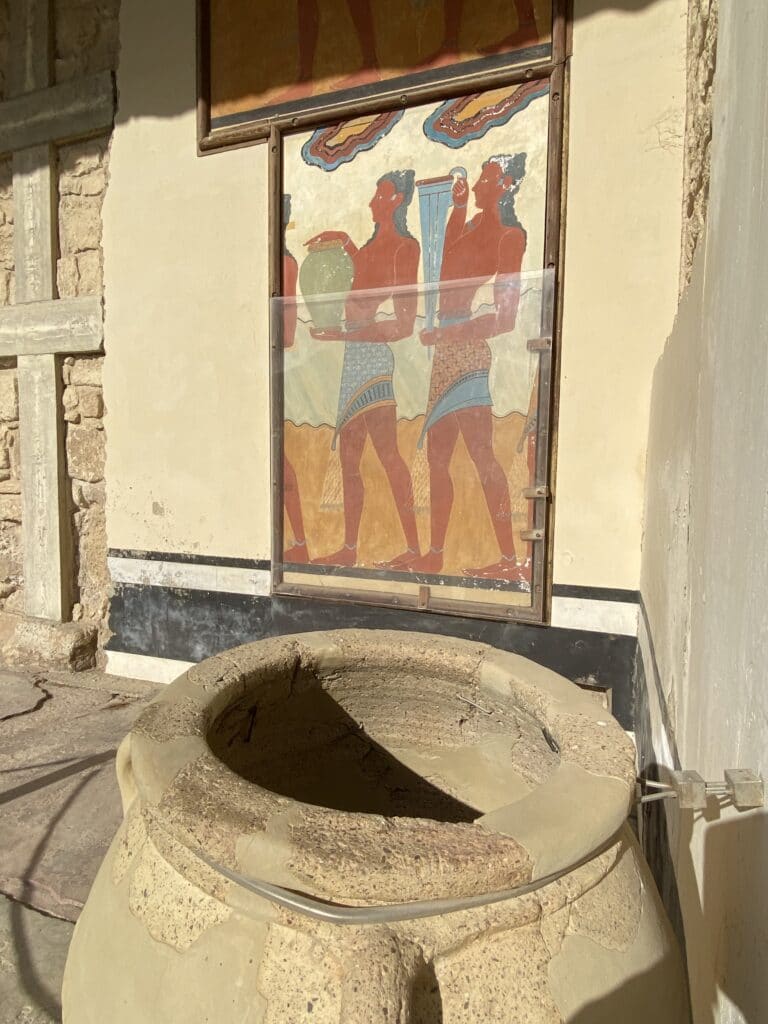
The journey from Heraklion, Crete’s largest city, to the site is a beautiful one through olive trees and vineyards. Knossos was one of the most important centres of the Minoan Civilisation – the capital of the Minoans and the seat of their king Minos. The first settlement on the site dated to around 7000 BC and the long history of area, through thousands of years, final drew to a close around 900 AD. The prosperity of Knossos was primarily based upon the development of native Cretan resources such as oil, wine, and wool but it was also a hub for expansive trade across the region.
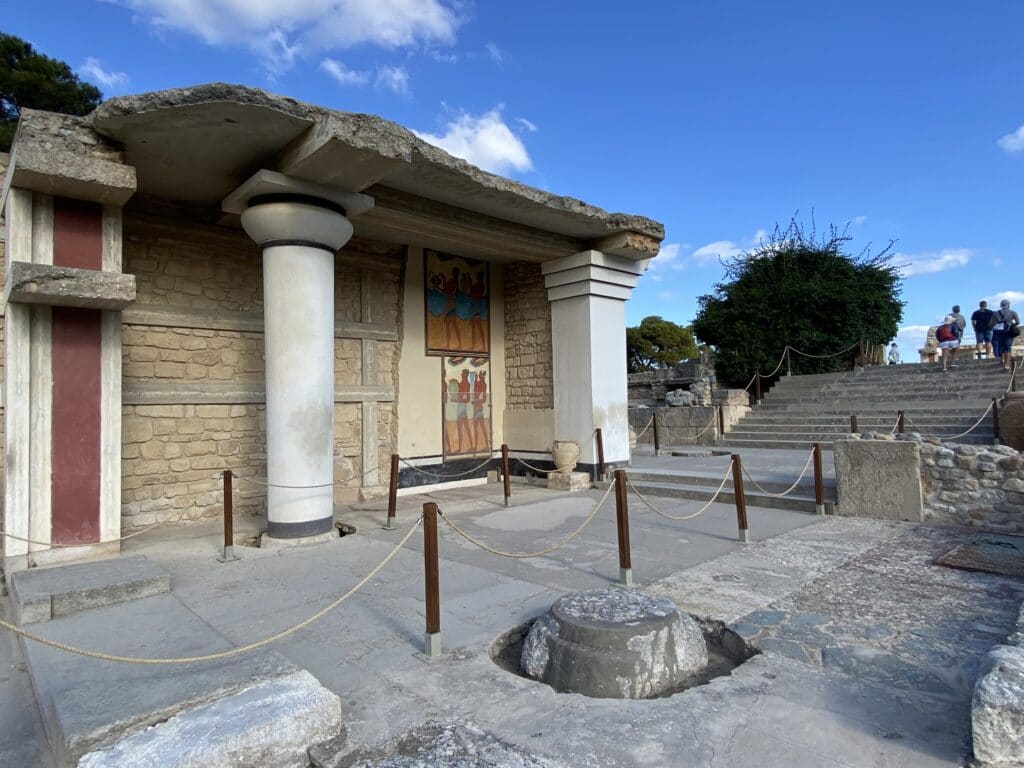
Knossos, the largest palace in Minoan Crete, was built around 2000 BC and was the centre of political, economic and religious life. It had large palace buildings, extensive stores and workshops and luxurious rock-cut cave and tombs. The site is expansive, over 22,000 sq. m, with more than 1,300 rooms. It is also a complex structure with many multi-story buildings and while a guided tour might have been advisable, we decided to self-guide and explore the site for ourselves. The weather was perfect, a bright blue sky with a gentle breeze, and with the site built largely on an artificial hill, we had the perfect backdrop to the incredible colour and decoration of the buildings.
The first major excavation of the site was carried out in 1878 by the wealthy art lover from Heraklion Minos Kalokairinos. Then in March 1900 Arthur Evans, a British archaeologist, started the excavation of not only the palace but also the wider area of Knossos. The palace complex was excavated in just five years, an incredibly short time, bringing to light an advanced city containing artwork and many examples of writing but work still continues today to preserve and explain the site.
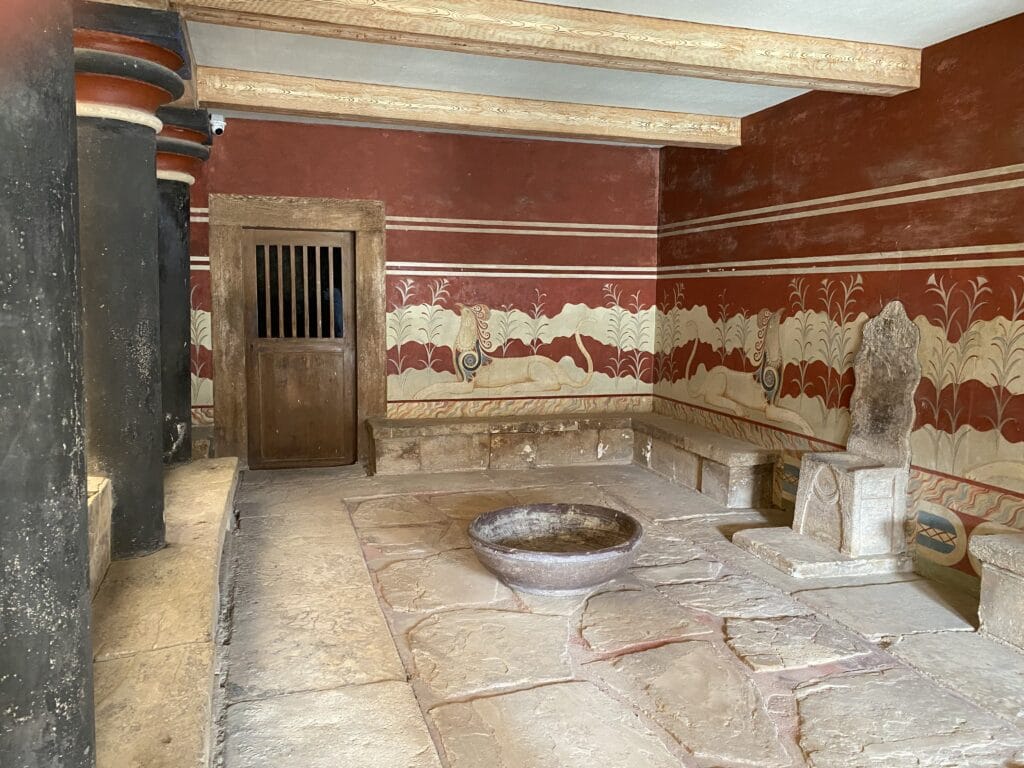
The excavation and exploration of the site have provided historians with a wealth of knowledge and insight into the Minoan Civilization meanwhile myth and legend still surround the site, perhaps most evocatively the story of the Minotaur, a half-man, half-bull, who was kept in a Labyrinth – a maze – within the complex.
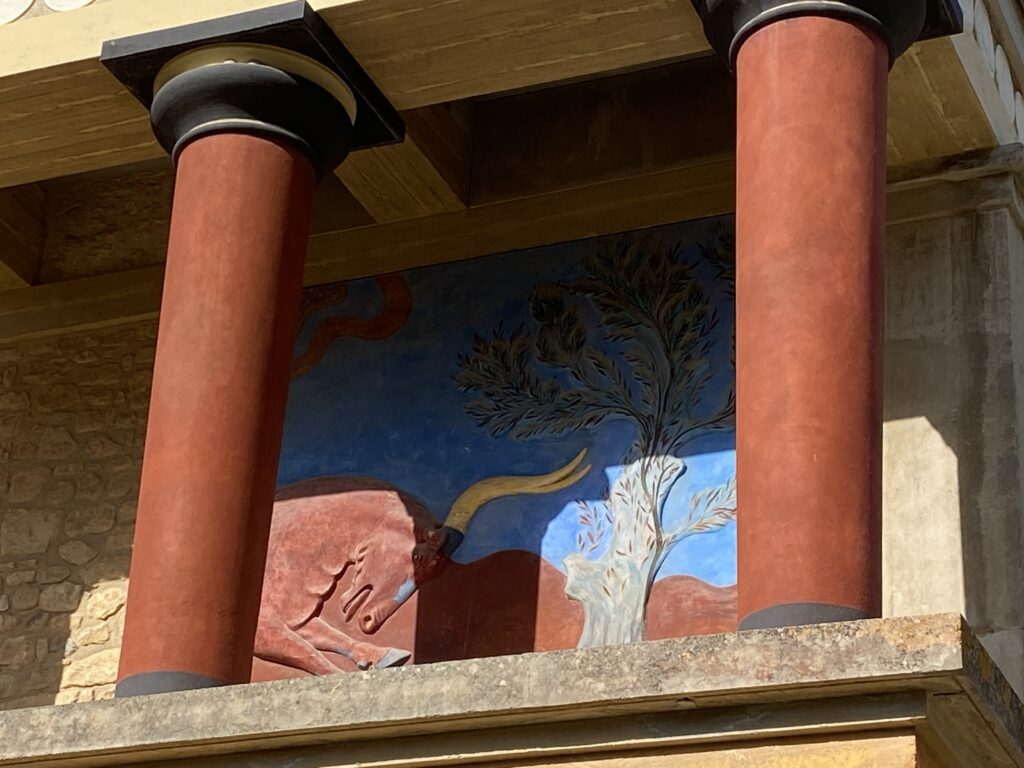
Our visit was incredible, but a day was just not long enough. I’m so looking for to an opportunity to visit Crete, and Knossos, again in the future but for now, their website here – https://visitknossos.com/ – will have to suffice.
